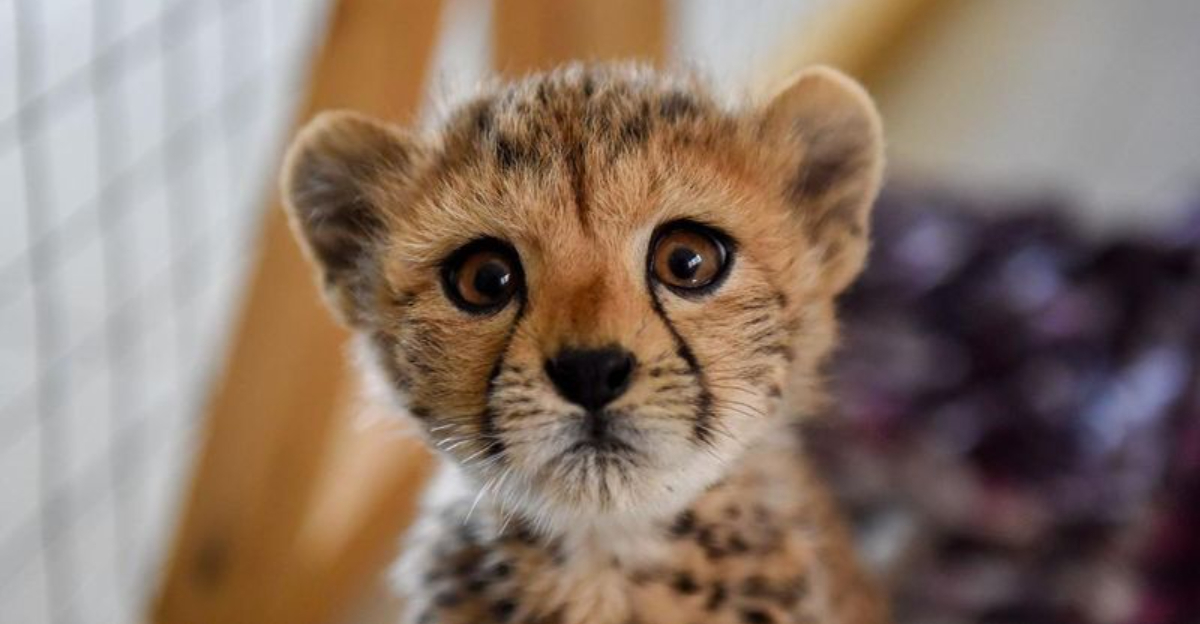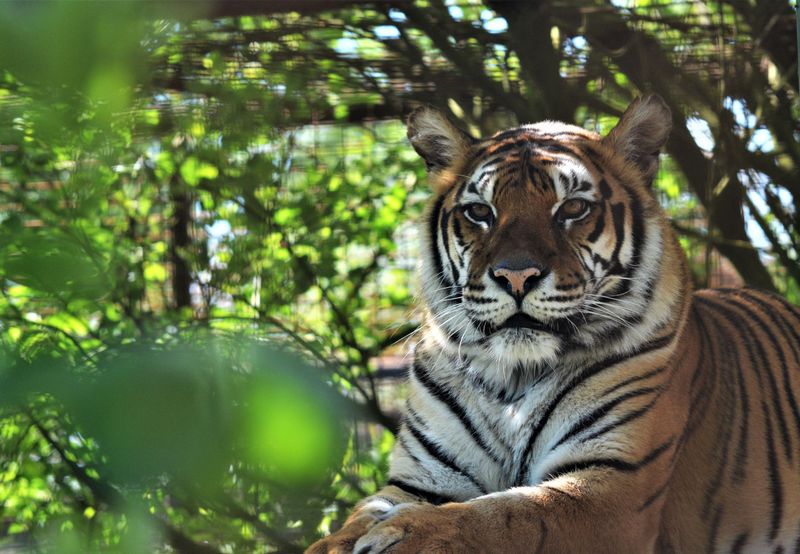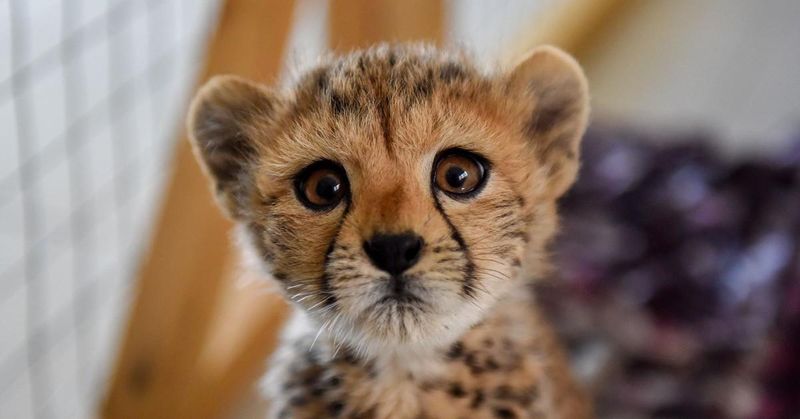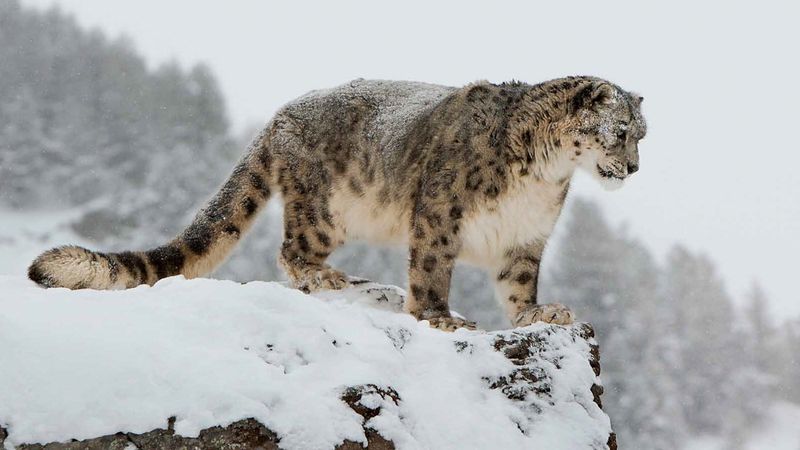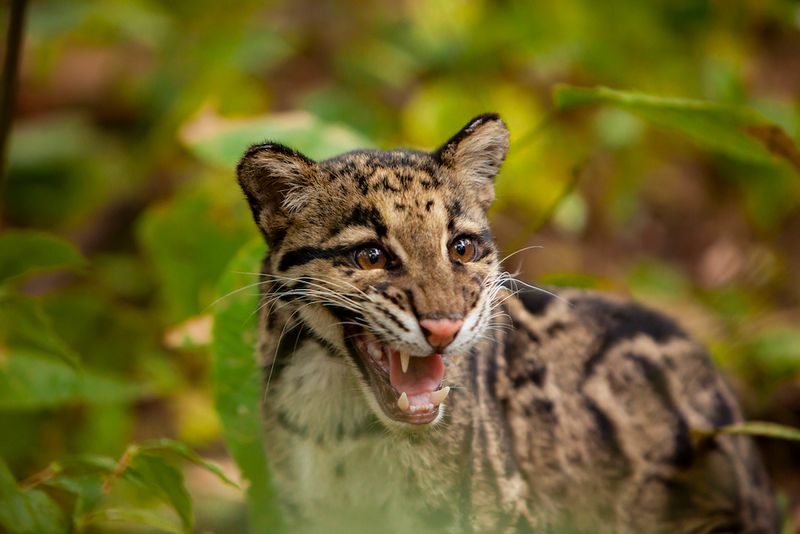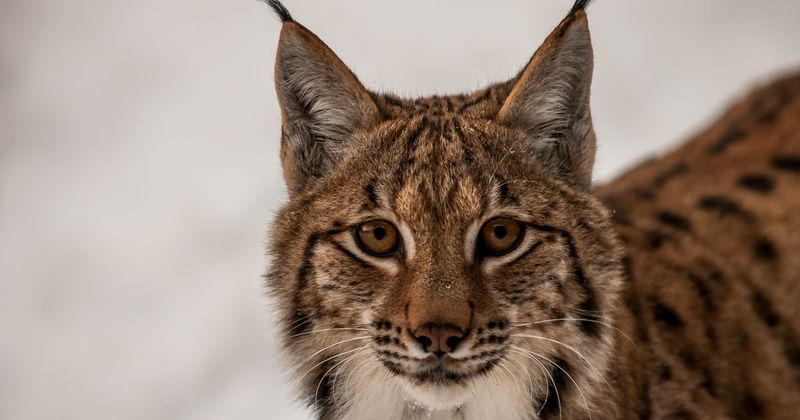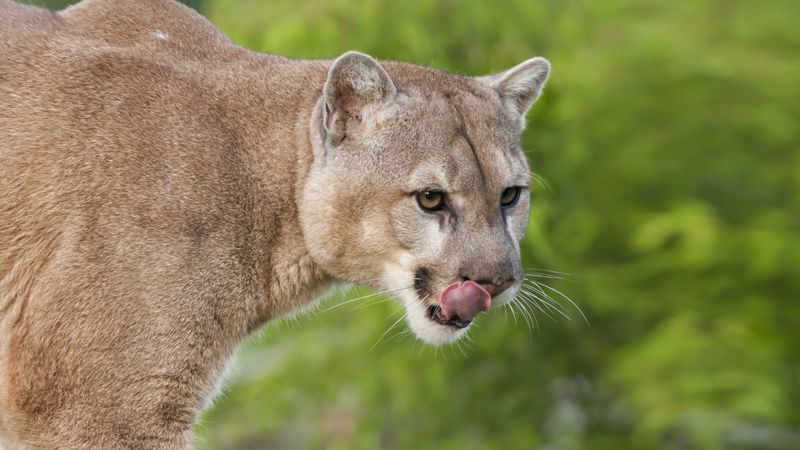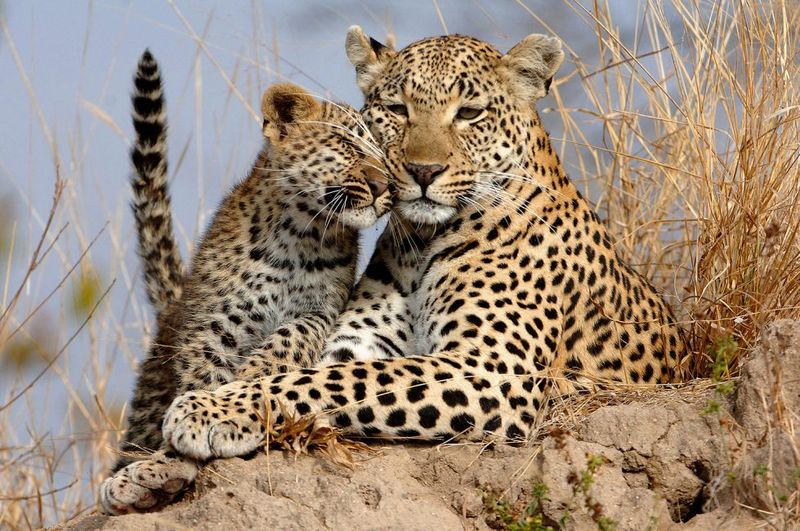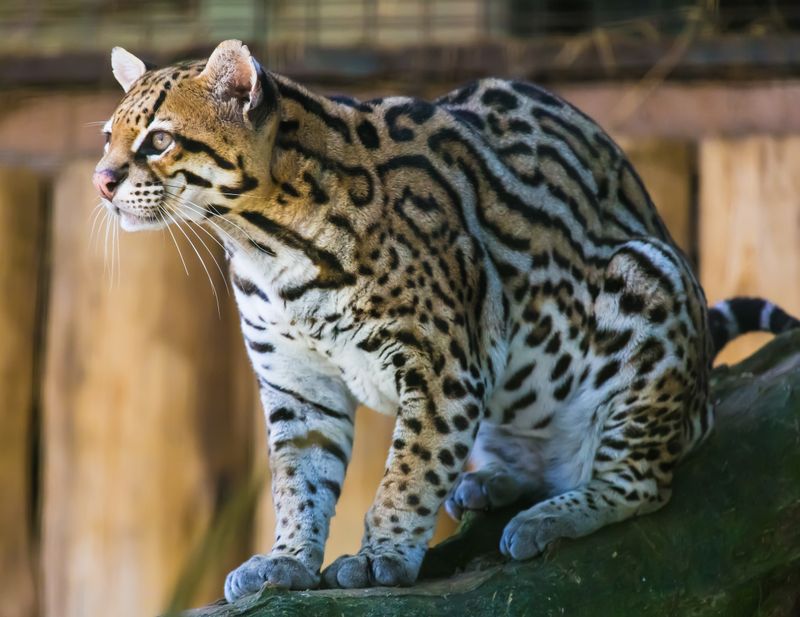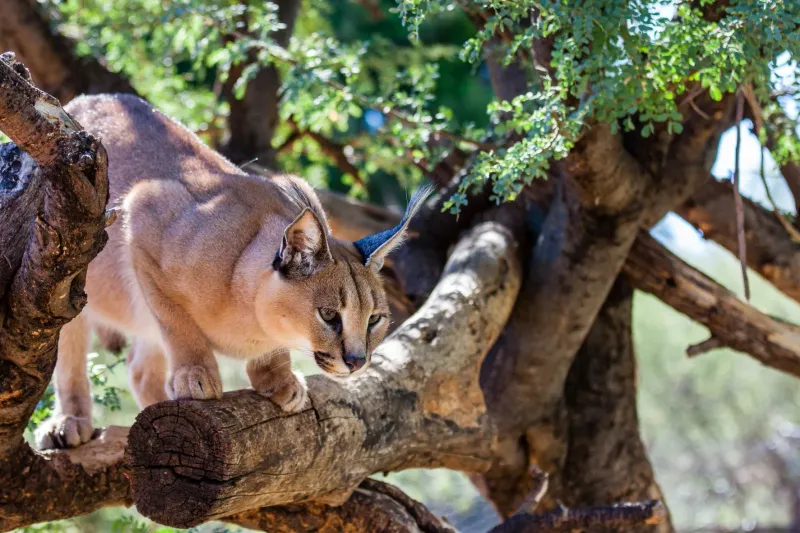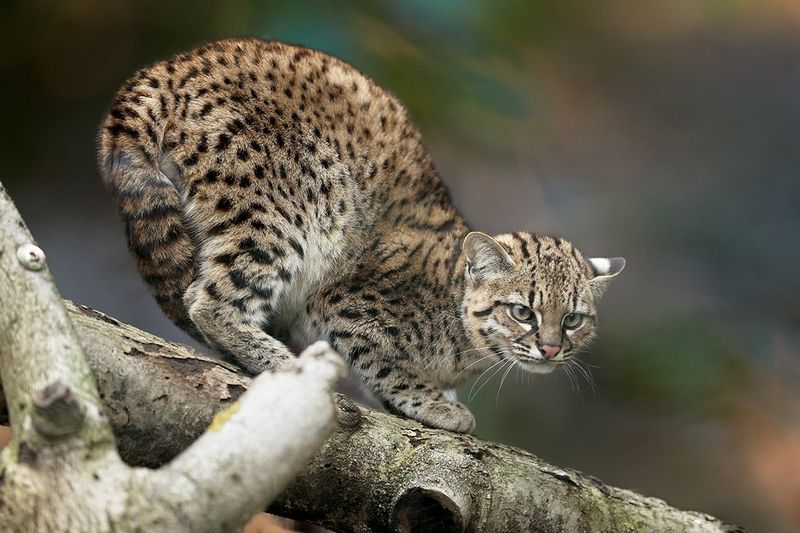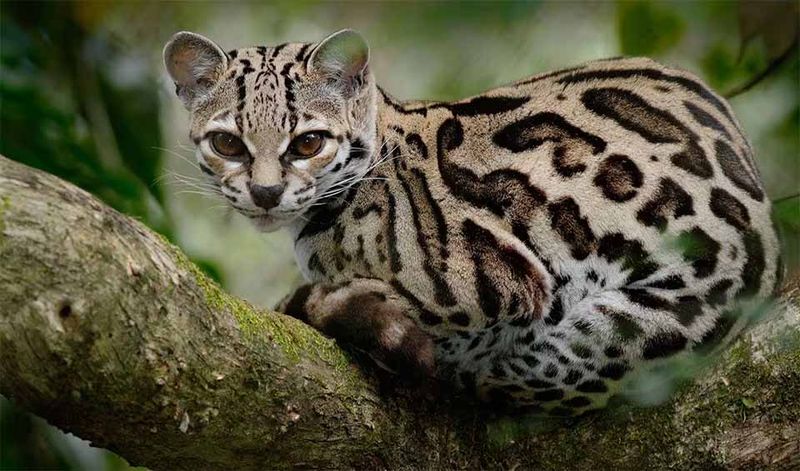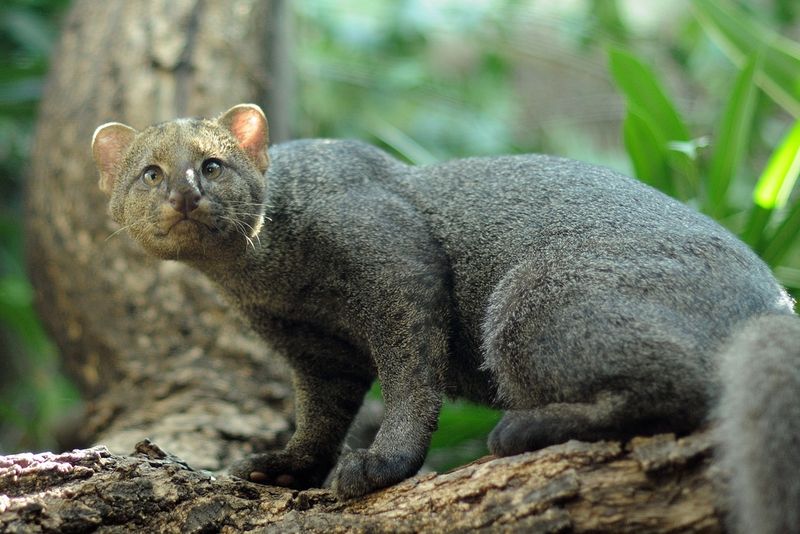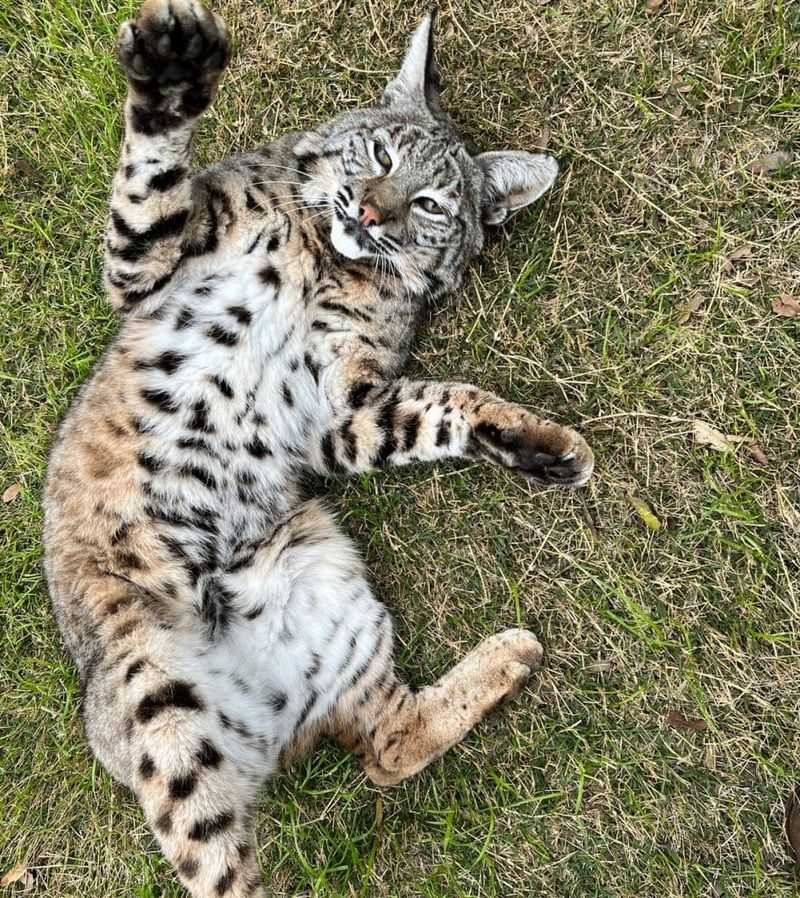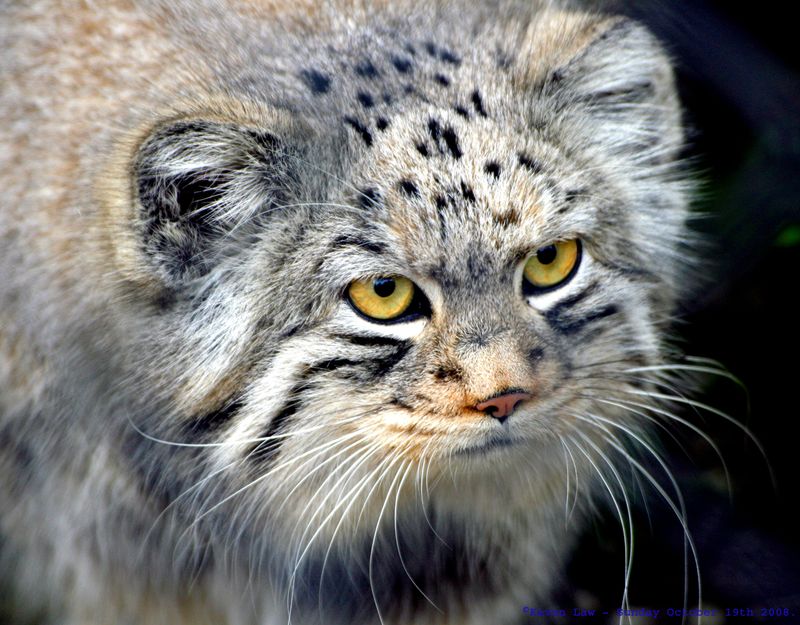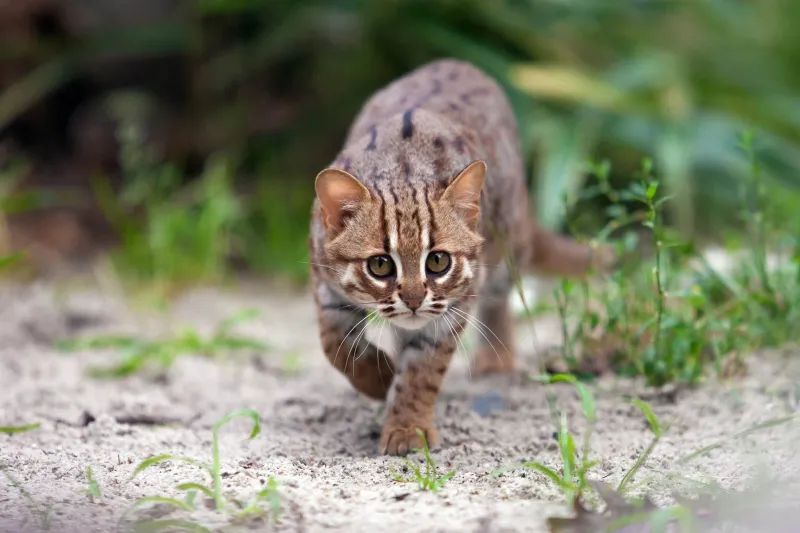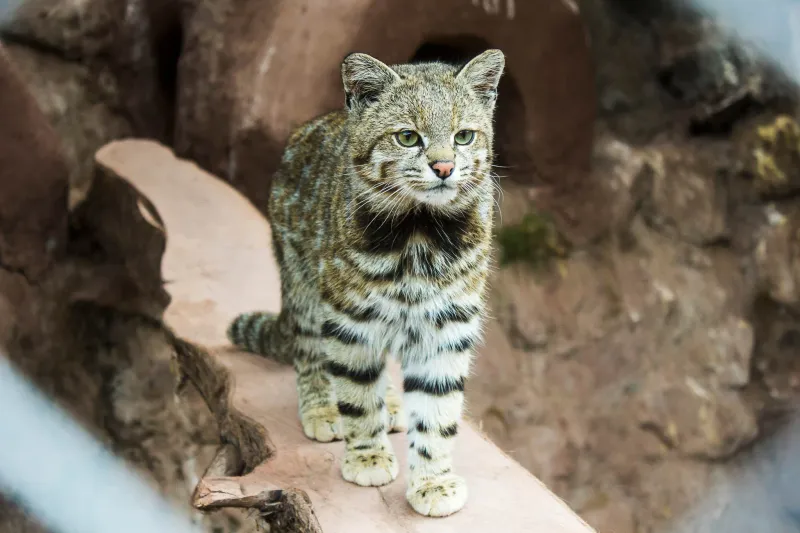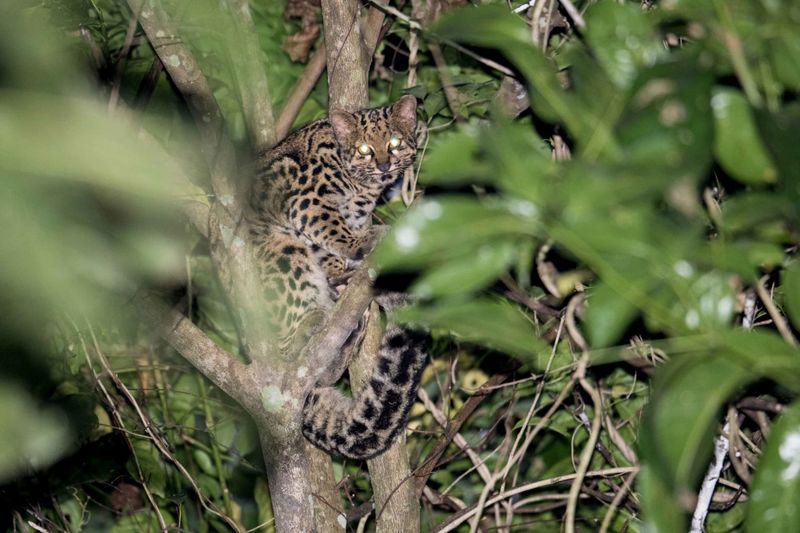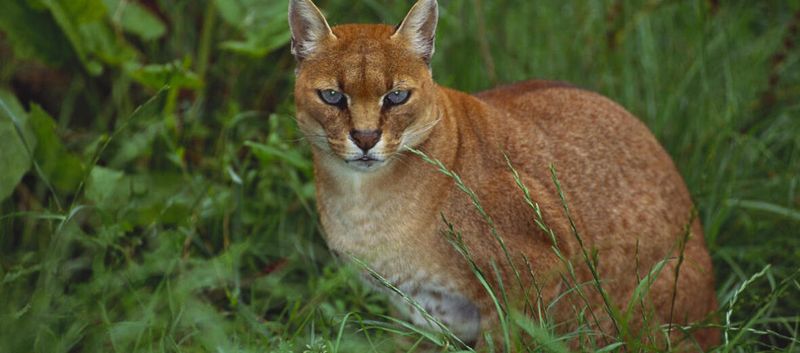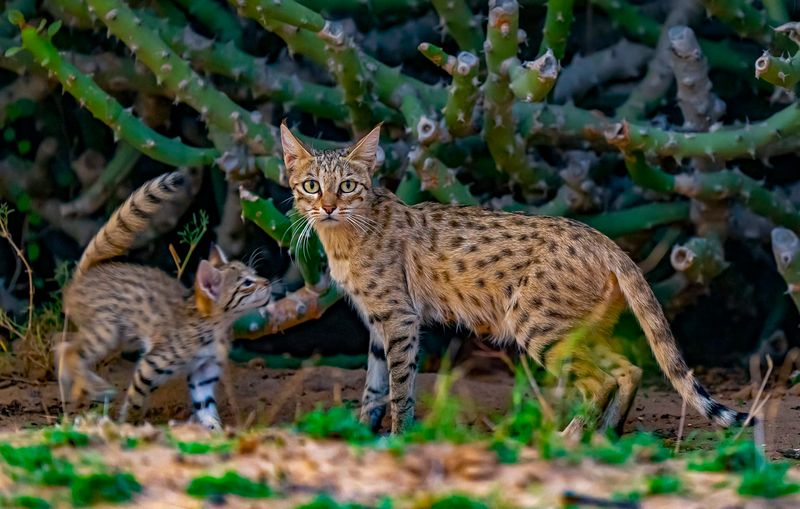📖 Table of Content:
- 1. Bengal Tiger
- 2. Cheetah
- 3. Snow Leopard
- 4. Jaguar
- 5. Clouded Leopard
- 6. Eurasian Lynx
- 7. Puma
- 8. Leopard
- 9. Ocelot
- 10. Serval
- 11. Fishing Cat
- 12. Caracal
- 13. Geoffroy’s Cat
- 14. Margay
- 15. Jaguarundi
- 16. Bobcat
- 17. Pallas’s Cat
- 18. Flat-headed Cat
- 19. Rusty-spotted Cat
- 20. Andean Mountain Cat
- 21. Black-footed Cat
- 22. Marbled Cat
- 23. African Golden Cat
- 24. Asiatic Wildcat
- 25. Iberian Lynx
Some cats may resemble domestic pets at a glance, but their true nature tells a very different story. With powerful instincts and specialized needs, these felines are far from suited to life in a typical household. Their behavior, strength, and environmental requirements set them apart from the lap cats most people know.
Despite their visual similarities to domestic breeds, wild cats follow a very different set of biological rules. Many are solitary hunters, territorial by nature, and prone to aggression if confined or improperly cared for. Attempts to tame them often lead to stress for the animal and danger for humans.
From apex predators to vulnerable species, these cats thrive only in the environments they evolved. Forests, savannas, and mountains offer the space and stimulation they need to survive and flourish. Housing them outside of these ecosystems often results in suffering, both for the animals and the people who try to keep them.
1. Bengal Tiger
Bengal tigers weigh up to 550 pounds and need vast territories to roam. These orange-and-black striped predators are endangered, with fewer than 4,000 remaining in the wild.
Despite what you might see on social media, these powerful cats retain their hunting instincts and can never be truly domesticated. A single swipe from their paw can cause serious injury or death.
Bengal tigers require specialized diets of raw meat and professional veterinary care that average households cannot provide. Conservation efforts focus on protecting these magnificent animals in their natural habitats across India, Bangladesh, Nepal, and Bhutan.
2. Cheetah
Reaching speeds up to 70 mph in a matter of seconds, cheetahs are unmatched in acceleration among land animals. Their lightweight build and powerful muscles enable this feat. To maintain their physical and behavioral health, they require large, open habitats.
Unlike some wild cats, cheetahs have relatively mild temperaments. However, they suffer extreme stress in captivity, often developing obsessive behaviors and health problems. Their specialized diet requires fresh meat and specific nutrients difficult to provide in a home.
Cheetahs face extinction with fewer than 7,000 remaining in the wild. Conservation organizations work tirelessly to protect these amazing runners in their natural African habitats rather than keeping them as exotic pets.
3. Snow Leopard
With thick fur and wide paws that help them navigate snowy terrain, snow leopards are built for life in rugged, mountainous regions. Their solitary lifestyle and unique habitat requirements prevent them from being kept as domestic animals.
These endangered cats are incredibly elusive, earning them the nickname “ghosts of the mountains.” Their beautiful spotted coats have made them targets for poachers, further threatening their survival.
Snow leopards require freezing temperatures and rocky terrain to thrive. Their diet consists primarily of wild mountain prey like blue sheep and ibex. With fewer than 6,500 left in the wild, every snow leopard is critical to conservation efforts.
4. Jaguar
With a bite force strong enough to crush bones and pierce skulls, jaguars stand as the largest felines in the Americas. Their powerful, 300-pound frames make them far too dangerous to handle safely, no matter their upbringing.
These spotted cats are excellent swimmers and climbers who need diverse environments with water access. They’re naturally territorial and solitary, becoming stressed and aggressive in captivity.
Jaguars face habitat loss throughout Central and South America. Their role as apex predators makes them essential for ecosystem health. Conservation efforts focus on protecting their natural territories rather than breeding them for captivity.
5. Clouded Leopard
Clouded leopards are named for their beautiful cloud-like spot patterns. These medium-sized wild cats have the longest canine teeth relative to their skull size of any modern cat, capable of delivering powerful bites.
Native to Southeast Asian forests, clouded leopards are arboreal masters with flexible ankle joints that allow them to climb down trees headfirst. Their natural behaviors require tall trees and complex environments, impossible to recreate in homes.
Conservation status for clouded leopards is vulnerable, with populations declining due to deforestation and poaching. Their shy, nervous temperament makes them prone to stress-related illnesses in captivity.
6. Eurasian Lynx
Built for snow-covered landscapes, the Eurasian lynx boasts sturdy legs and a body that can reach 80 pounds, making it the biggest of all lynx species. It’s instantly recognizable by its ear tufts and short tail.
These secretive cats need large territories spanning up to 180 square miles in the wild. They’re specialized hunters of deer and other large prey, behaviors impossible to accommodate in domestic settings.
Lynx are naturally wary of humans and resist handling. While they may appear similar in size to large domestic cats, their wild instincts remain intact regardless of upbringing. Several countries have strict laws protecting these cats from the exotic pet trade.
7. Puma
Also known as mountain lions or cougars, pumas are powerful predators found throughout the Americas. Adult males can weigh up to 220 pounds and leap 40 feet horizontally, requiring enormous space to express natural behaviors.
These cats are solitary and territorial, needing up to 370 square miles in the wild. Despite occasional stories of “tame” pumas, they retain unpredictable wild instincts that make them dangerous in homes.
Pumas are ambush predators with strong prey drives that cannot be trained away. Their specialized dietary needs include whole prey animals with bones and organs. Conservation efforts focus on reducing human-wildlife conflict as development encroaches on their habitat.
8. Leopard
Found throughout Africa and parts of Asia, leopards are some of the most versatile big cats. Their powerful muscles enable them to drag prey double their size up into trees, underscoring the risks of trying to domesticate them.
These spotted cats are masters of stealth and ambush hunting. Even when raised from cubs, leopards maintain powerful predatory instincts that can trigger without warning, making them dangerous to humans.
Leopards require specialized diets and veterinary care unavailable to most owners. Their population faces threats from habitat loss and poaching for their beautiful spotted coats. Most countries have banned private ownership of leopards to protect both the animals and public safety.
9. Ocelot
Once coveted for their beautiful gold-and-black fur, ocelots are medium-sized wild cats native to the Americas. They may be just twice the size of a pet cat, but their strength and unpredictable behavior make them true creatures of the wild.
Salvador Dali famously kept an ocelot named Babou, contributing to a brief trend of keeping these wild cats as pets in the 1960s. This practice proved disastrous for both the cats and their owners, as ocelots mark territory with strong-smelling urine and become aggressive as they mature.
Today, ocelots are protected under the Endangered Species Act. Their population faces threats from habitat fragmentation, with fewer than 50 remaining in the United States.
10. Serval
Servals have the longest legs relative to body size of any cat, allowing them to leap over 9 feet high to catch birds. These African cats weigh up to 40 pounds and possess specialized hunting abilities for catching rodents and birds.
Their distinctive large ears can detect prey moving underground. Servals have specific environmental needs, including access to water, tall grasses, and warm temperatures that homes cannot provide.
While servals have been crossbred with domestic cats to create Savannah cats, pure servals remain wild animals. They spray potent urine to mark territory, destroy furniture with natural behaviors, and can become aggressive during maturity. Most states have banned private ownership of servals.
11. Fishing Cat
Native to the wetlands of South and Southeast Asia, fishing cats are expert swimmers that defy feline stereotypes. With water-resistant coats and partially webbed feet, they dive beneath the surface to snag aquatic prey.
These medium-sized wild cats face severe habitat loss as wetlands are drained for development. Their population has declined by over 50% in recent decades, making conservation critical.
Fishing cats require complex wetland environments with clean water sources and abundant fish. Their specialized hunting techniques and environmental needs cannot be met in captivity. Additionally, their strong fishy odor makes them particularly unsuitable as indoor companions.
12. Caracal
Recognizable by their dramatic ear tufts and reddish-tan coats, caracals are medium-sized wild cats with astonishing jumping ability. From a standing position, they can spring more than 10 feet into the air to capture flying birds.
Native to Africa, the Middle East, and parts of Asia, caracals are powerful hunters that prey on animals as large as antelopes. Their strong build and lightning reflexes make them potentially dangerous, especially when mature.
Caracals have been kept as hunting companions by ancient Egyptians, but modern attempts at domestication have failed. They mark territory with pungent spraying and require specialized diets. Most jurisdictions classify caracals as dangerous wild animals.
13. Geoffroy’s Cat
Geoffroy’s cats are small wild felines native to South America, weighing just 4-8 pounds. Despite their modest size, they maintain all the wild instincts and behaviors of their larger relatives.
These spotted cats are primarily nocturnal and territorial, requiring specialized habitats with climbing structures, hiding places, and temperature controls. They’re expert hunters of birds, reptiles, and small mammals.
Geoffroy’s cats face threats from habitat loss and the illegal pet trade. Their sensitive nature makes them prone to stress in captivity, leading to health problems and aggressive behavior. Most countries restrict ownership of these cats to protect both the animals and potential owners.
14. Margay
With the ability to rotate their ankles 180 degrees, margays are among the most agile tree-dwelling cats in Central and South America. This unique adaptation lets them run down trees headfirst and hang by a single paw while hunting.
These small spotted cats closely resemble ocelots but are more specialized for arboreal life. Margays rarely come to the ground in the wild, spending almost their entire lives in the rainforest canopy.
Habitat destruction threatens margay populations as rainforests are cleared. They’re incredibly sensitive to environmental changes and stress, often refusing to breed in captivity. Their specialized needs for vertical space, complex environments, and diverse prey make them impossible to keep properly as pets.
15. Jaguarundi
Jaguarundis look more like weasels than typical cats with their elongated bodies, short legs, and uniform coloration. These unusual wild cats come in two color phases: a red-brown form and a gray-black form, sometimes called “otter cats” for their appearance.
Native to Central and South America, jaguarundis are active during daylight hours, unlike most felines. They’re excellent swimmers and hunters, feeding on everything from rodents to reptiles.
Jaguarundis face habitat loss throughout their range. While not as aggressive as some wild cats, they retain territorial behaviors, including scent marking, and cannot adapt to domestic living. Their conservation status ranges from near threatened to endangered, depending on the region.
16. Bobcat
Recognizable by their short tails and tufted ears, bobcats are adaptable wild cats found throughout North America. Weighing between 15 and 35 pounds, they possess the strength and skill to bring down prey far bigger than their size.
These native wildcats have managed to survive alongside human development better than many species. Their secretive nature and ability to live in diverse habitats from forests to deserts has helped their survival.
Bobcats possess strong hunting instincts and territorial behaviors that make domestication impossible. They mark territory with pungent urine and become increasingly aggressive as they mature. Most states prohibit keeping bobcats as pets to protect both the animals and public safety.
17. Pallas’s Cat
Also called manuls, Pallas’s cats are small but stocky wild cats native to cold, mountainous regions of Central Asia. Their exceptionally thick fur and flat faces give them a distinctive owl-like appearance.
These unusual cats have round pupils instead of vertical slits like most felines. Pallas’s cats are adapted for extreme cold with the densest fur of any cat species, making them overheat easily in warmer climates.
Conservation status for Pallas’s cats is near threatened due to habitat loss and hunting. They’re notoriously difficult to breed in captivity, with kittens highly susceptible to toxoplasmosis. Their specialized adaptations for high-altitude living make them impossible to keep properly in home environments.
18. Flat-headed Cat
Specialists of Southeast Asian wetlands, flat-headed cats have evolved partly webbed paws and sharp teeth that face backward, enabling them to expertly catch aquatic animals.
These small cats have the flattest skull of any feline, with eyes positioned forward for better underwater vision. They’re extremely dependent on wetland habitats with clean water for both drinking and hunting.
Flat-headed cats face a dire conservation situation, classified as endangered due to wetland destruction across their range. Few people have observed these secretive cats in the wild. Their specialized needs for aquatic habitats and fish-based diets make captivity particularly challenging.
19. Rusty-spotted Cat
Rusty-spotted cats hold the title of world’s smallest wild cat, weighing just 2-3.5 pounds fully grown. Native to India and Sri Lanka, these tiny felines have rusty spots on a gray background and enormous eyes adapted for night hunting.
Don’t let their small size fool you. These miniature wildcats possess all the predatory instincts and territorial behaviors of their larger relatives. They’re incredibly agile climbers and hunters, capable of taking prey almost their own size.
Rusty-spotted cats face habitat loss as forests are cleared for agriculture. Their vulnerable conservation status and specialized needs make them inappropriate pets. Few facilities worldwide have successfully bred these rare cats in captivity.
20. Andean Mountain Cat
One of the most elusive and endangered feline species, the Andean mountain cat survives in the remote high Andes above 3,000 meters, enduring low oxygen levels and extreme cold.
Their thick, ash-gray fur with distinctive brown stripes and spots provides camouflage among rocky terrain. Andean cats are specialized hunters of mountain viscachas, rodents that make up 93% of their diet.
With fewer than 2,500 adults remaining in the wild, every individual is crucial for conservation. Their specialized adaptations for high-altitude living make them impossible to maintain in captivity. Most Andean communities have never seen these cats despite living in their territory.
21. Black-footed Cat
Though tiny—only 2 to 5 pounds—black-footed cats are among the deadliest predators on Earth, boasting a 60% hunting success rate. Native to southern Africa’s dry areas, these fierce little hunters can catch as many as 14 prey animals in one night.
These tiny cats are named for the black pads and fur on the undersides of their feet. They’re highly specialized for desert living, getting most of their water from prey and sheltering in abandoned burrows during extreme heat.
Black-footed cats are classified as vulnerable to extinction due to habitat degradation. Their intense territorial nature and specialized needs make them unsuitable as pets despite their small size.
22. Marbled Cat
Resembling miniature clouded leopards, marbled cats sport beautiful marbled fur patterns. Native to Southeast Asia’s forests, they have long tails nearly equal to their body length that aid in balance.
Highly arboreal, marbled cats spend most of their lives in trees, hunting birds, squirrels, and reptiles in the forest canopy. They possess specialized ankle joints that rotate to climb down trees headfirst, similar to margays.
Marbled cats face a vulnerable conservation status due to deforestation across their range. Very little is known about their behavior in the wild due to their secretive nature. Their specialized arboreal lifestyle makes them impossible to accommodate properly in captivity.
23. African Golden Cat
African golden cats are medium-sized wild felines found exclusively in the rainforests of Central and West Africa. These secretive cats come in two color variations: golden-red and slate-gray, both with subtle spots.
As forest specialists, African golden cats are rarely seen even by local people who share their habitat. They’re powerful hunters capable of taking prey as large as small antelopes and monkeys, demonstrating strength disproportionate to their size.
Conservation status for African golden cats is vulnerable due to habitat destruction and bushmeat hunting. Almost nothing is known about their behavior in the wild. Their specialized forest adaptations and secretive nature make them particularly unsuited to captivity.
24. Asiatic Wildcat
Though closely related to our pet cats, Asiatic wildcats remain wild animals. They inhabit the arid deserts and scrublands across the Middle East and Central Asia, expertly adapted to these challenging environments.
While they may look similar to domestic tabbies, Asiatic wildcats are larger and more powerfully built. They’re solitary, territorial hunters that fiercely defend their space from other cats.
Conservation concern for Asiatic wildcats centers on hybridization with feral domestic cats, which threatens their genetic distinctiveness. Pure wildcats cannot be domesticated even when raised from kittens. Their natural behaviors include extensive territory marking and aggressive responses to perceived threats.
25. Iberian Lynx
Holding the grim title of the world’s most endangered feline, the Iberian lynx once roamed widely across Spain and Portugal. Today, intensive conservation has helped, but fewer than 1,000 survive in the wild.
These medium-sized cats with distinctive tufted ears and beard-like facial ruffs are specialized hunters of European rabbits, which make up 90% of their diet. This specialization has contributed to their endangered status as rabbit populations declined from disease.
Every Iberian lynx is critically important to conservation efforts. They require large territories with Mediterranean scrubland habitat and abundant rabbit populations. International laws strictly protect these cats from capture or trade.
